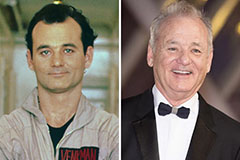Portrait painting is more than just replicating a person's form. It is about communicating the very essence within their being. The artist strives to discover the subject's inner world, manifesting it onto canvas through subtle strokes and a skilful knowledge of color. A truly great portrait is not just a likeness, but a glimpse into the subject's essence.
A Brush with Identity: Exploring the Depths of Portraiture
Portraiture captures a unique place in the artistic landscape. It extends mere representation, delving into the core of an individual's being. Through the meticulous application of paint or the skilled manipulation of light and shadow, artists expose the hidden nuances of personality, expressing a story that resonates through time. Every brushstroke becomes a testament to the painter's interpretation of the human experience, inviting viewers to connect themselves in the subject's world.
Additionally, a portrait is not simply a visual record; it is a reflection of a particular moment in time, capturing the ephemeral nature of identity. As individuals transform, so too do the portraits that depict them. This dynamic relationship between artist and subject creates a complex tapestry of meaning, inviting us to reflect upon the very nature of self.
Beyond the Canvas: Unveiling the Stories in Portraits
A portrait depicts more than just a physical likeness; it's a window into the soul, a frozen moment in time that captures the essence of a person's/an individual's/someone's being. Every brushstroke, every shade of color, reveals/unveils/exposes a story waiting to be decoded/interpreted/discovered. Through the eyes of the subject, we glimpse/perceive/witness their hopes, dreams, and hidden/secret/latent desires. The texture/fabric/material of their clothing, the subtlety/nuance/tone in their expression, all contribute to the rich tapestry/complex narrative/intricate web that unfolds before us.
- A portrait can be a powerful tool for understanding/connecting with/empathizing with others.
- By studying/Examining/Observing the details, we can gain/may glean/acquire insights into their personality/character/temperament.
- Ultimately, a portrait is a reflection/representation/manifestation of the human experience in all its complexity/nuance/depth.
Mastering the Human Form: Techniques and Traditions in Portrait Painting
Capturing the essence of human form has been a central goal for artists across epochs. From the ancient Greeks to modern-day masters, portrait painters have refined techniques and utilized traditions to bring their subjects to life on canvas. One of the fundamental elements of this craft is a deep knowledge of human anatomy. Artists carefully study skeletal structure, muscle placement, and the interplay of light and shadow to translate the three-dimensional nature of the body.
Portrait painting often involves a layered approach. Artists may begin with rough underpaintings to establish the basic form and composition, gradually building up layers of paint to create depth and subtlety. They employ a range of brushstrokes, from gentle blends to bold strokes, depending on the desired effect. The choice of colors and their placement also play a crucial role in communicating mood, emotion, and personality.
- Traditional portrait painting techniques often include impasto, which involves applying paint in varied layers to create texture and depth.
- Renowned paintings from different eras reveal the evolution of portraiture, showcasing the developments made by artists throughout history.
- Beyond technical skill, great portrait painters possess a acute eye for detail and an ability to convey the unique essence of their subjects.
Throughout history, portrait painting has served as a striking means of preserving the human experience. From official portraits of royalty to intimate depictions of everyday people, these works offer valuable insights into the lives, beliefs, and aspirations of past generations.
A Brush with Power: The Gaze in Portraiture
Portraiture has served as a powerful medium for communicating power, presence, and perception. The gaze of the sitter, captured by the artist's brush, holds a complex interplay of intention, position, and the viewer's own interpretations.
- Throughout history
- artists
- crafted portraits that subvert our understanding of authority
The gaze itself becomes a battleground of assertion. A direct gaze can establish dominance, while a fleeting glance may imply vulnerability or shyness.
Ultimately, the painted gaze is more than just a visual element; it's a nexus where the sitter, the artist, and the viewer come together in a dynamic exchange that persists through time.
From Life to Likeness: The Evolution of Portrait Painting
Portrait painting, a compelling art form, has undergone a profound transformation throughout history. From the early representations of ancient cultures to the innovative styles of modern artists, portraiture has captured the changing values of society.
Early portraits often served as dignified representations of power and status, illustrating individuals in their costumes. As artistic techniques evolved, portraiture embraced greater emotional depth, allowing artists to express the inner lives of their subjects.
The Renaissance period saw a boom in portrait painting, with masters like Leonardo da Vinci and Raphael creating landmark representations. They highlighted on capturing not only the physical likeness but also the personality of their sitters.
With the advent of photography, portraiture faced a unique challenge. While photography could capture literal likeness with accuracy, it struggled to express the emotional dimension that artists had achieved. This led to a check here evolution in portrait painting, with artists experimenting new approaches to create works that were more than just reproductions.
 Tony Danza Then & Now!
Tony Danza Then & Now! Daniel Stern Then & Now!
Daniel Stern Then & Now! Ross Bagley Then & Now!
Ross Bagley Then & Now! Earvin Johnson III Then & Now!
Earvin Johnson III Then & Now! Bill Murray Then & Now!
Bill Murray Then & Now!